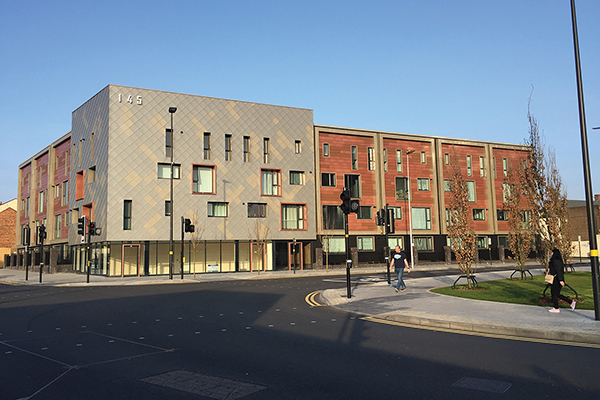You are viewing 1 of your 1 free articles
Time to review housing density
Higher-density living can be an affordable and attractive proposition if done well, says Alan Yates
Earlier this year I visited Melbourne and Sydney, where very high-density residential development is being constructed in the city centres to meet growing demand.
There was some debate about housing in the press and an article caught my eye that focused on housing density and the collaborative economy.
It noted that while Australian homes had increased in size over the past 100 years, the occupancy level had halved from 5.3 people per home to just 2.6 today.
It highlighted the move to a mixed-tenure model with half the population living in larger homes that they could afford and the other half living in smaller spaces and purchasing the extra services that they need on a pay-as-you-use basis, like paying for access to a gym.
It suggested that if you want to drive, you no longer buy a car but sign up for a ‘Go Get’ car parked close to your home and booked via an app on your phone for just a few dollars an hour.
The idea is to own or rent a smaller, affordable home and share the other amenities you require with other consumers, like sharing a room in your home through Airbnb or joining tool clubs (apparently the average electric drill is used for only nine minutes per year).
“We should perhaps think more about increasing housing density both in the centres themselves and around transport hubs.”
It is suggested that consumers recognise that they don’t need a drill, they need a hole, in the same way that they don’t need a car, they just want a means to drive somewhere. This concept of “collaborative consumption” was defined by global thought leader Rachel Botsman and the approach could free up funds to help pay the rent or the mortgage.
I also started to think about how the UK housing crisis is partly caused by land supply and instead of building out from the urban centres (which have all of the infrastructure required) we should perhaps think more about increasing housing density both in the centres themselves and around transport hubs.
The book Social Housing: Definitions and Design Exemplars by architect Paul Karakusevic and published by the Royal Institute of British Architects in May 2017, explores a number of issues relating to housing supply and draws together 24 case studies by 20 architectural practices from eight European countries with the objective of capturing some of the best and most innovative examples of housing at what is described as “a critical juncture for the sector”.
This includes:
- The concept of high-density, low-rise housing
- Noting that the way households use internal space is changing
- The need to design high-quality neighbourhoods as well as high-quality, flexible homes
- The fact that residents have a key role to play in the creation of successful and sustainable neighbourhoods
The late Sir Peter Hall, a professor at the Bartlett School of Architecture, reported back in 2009 that while housing density in central London was 80 dwellings per hectare (dph), it was as low as 20dph in many 1980s developments.
In Birmingham, the housing need was assessed in its 2016 Strategic Housing Land Availability Assessment (SHLAA) at 51,000 homes and yet only enough land was available to build 43,000, a shortfall of some 8,000 homes.
In the German city of Freiburg there are two developments in the suburbs of Vauban (2,000 homes) and Rieselfeld (4,200 homes) that offer high-density, car-free living with access to public open space.
This is family housing of no more than three to four storeys with a private balcony or terrace provided for each dwelling, along with access to good public transport and local facilities.
A typical low-rise housing development will accommodate around 35dph. If we were to increase the density of new housing developments in urban areas to the minimum level achieved in Freiburg (which is 48-60dph) then I wonder if somewhere like Birmingham could potentially accommodate all 51,000 new homes on the land that has been identified in the SHLAA.
“It is not clear what average densities are actually being achieved at the moment.”
The Birmingham Development Plan broadly supports this approach and states that development should take place at a minimum of 100dph in the city centre, 50dph in local centres and on good public transport corridors, and 40dph elsewhere.
This is consistent with the National Planning Policy Framework, which states that local planning authorities should “set out their own approach to housing density to reflect local circumstances”, although it is not clear what average densities are actually being achieved at the moment.
The Housing White Paper identified this issue earlier this year in which it said that we need “innovative approaches to meeting demand, especially in areas of high demand where available land is limited”.
I am not advocating high-rise blocks or micro-homes – but a review of housing density on well-designed sites adjacent to good-quality open space, access to public transport and the move to a model of collaborative consumption for other facilities which will make higher-density living an affordable and attractive proposition if done well.
Alan Yates, executive director of regeneration, Accord Group











